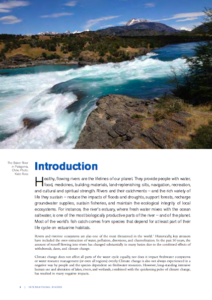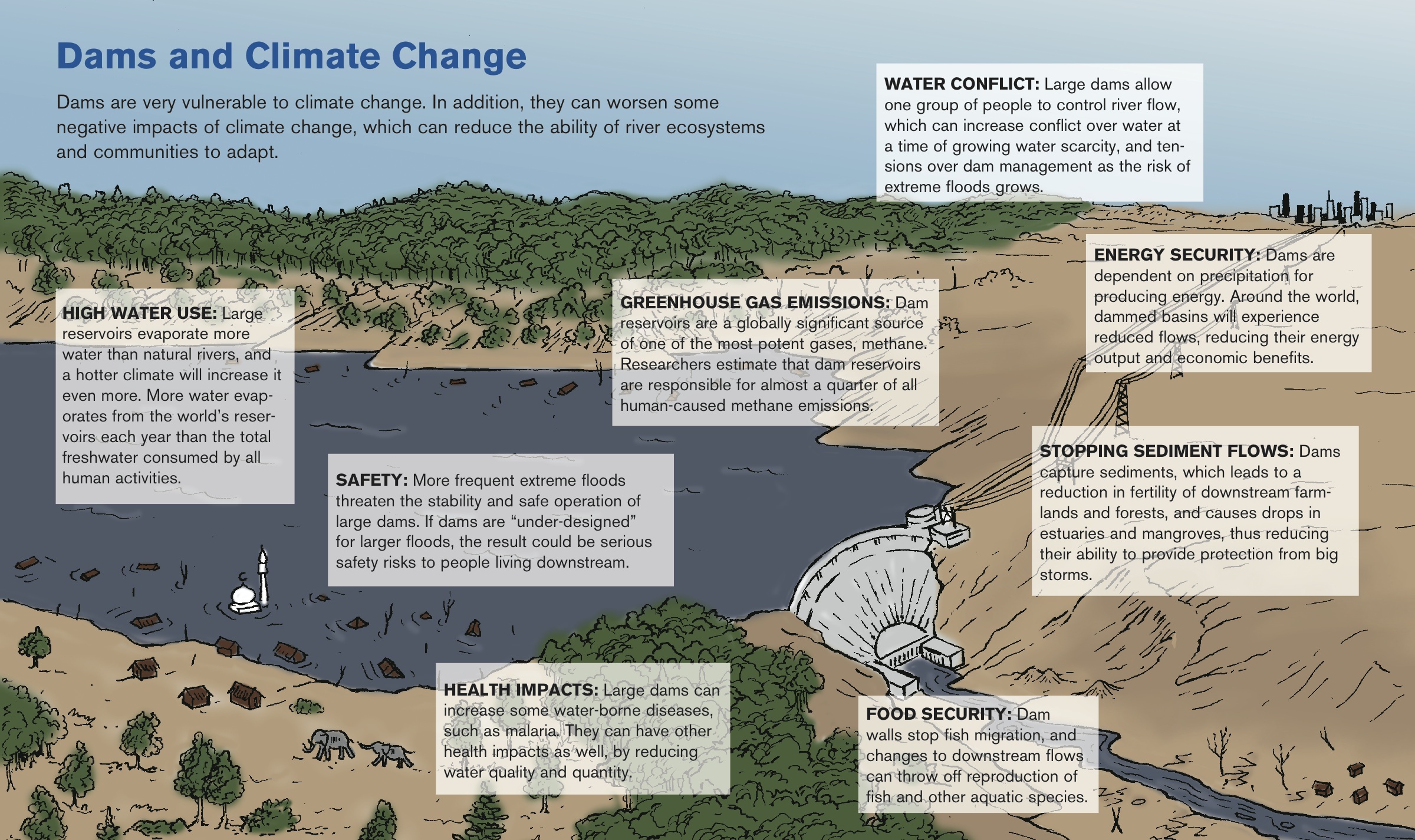Background
Healthy, flowing rivers are the lifelines of our planet. They provide people with water, food, medicines, building materials, land-replenishing silts, navigation, recreation, and cultural and spiritual strength. Rivers and their catchments – and the rich variety of life they sustain – reduce the impacts of floods and droughts, support forests, recharge groundwater supplies, sustain fisheries, and maintain the ecological integrity of local ecosystems.
Yet rivers and riverine ecosystems are also one of the most threatened in the world, and climate change brings serious new threats to these critical systems.
More extreme floods and droughts are on the rise. Higher temperatures are increasing evaporation and reducing water supply. Large water infrastructure projects can cause considerable harm to ecosystem services and livelihoods by altering the hydrological cycle. When the impacts of climate change combine with these infrastructure-related impacts, the scenario becomes a “perfect storm” for the world’s fisheries, forests, critical natural habitats, and agriculture.
As the impacts of climate change become more urgent each day, it has become clear that cross-cutting approaches that combine community-based development, disaster-risk management and climate adaptation are more important than ever. Healthy rivers are critical for helping vulnerable communities adapt to a changing climate – protecting them now is a community’s health insurance policy for the future. With the help of a number of partner organizations, we have developed the Civil Society Guide to Healthy Rivers and Climate Resilience.
What’s in the Guide
Using case studies and examples from around the world, the guide answers questions that help assess, address, and adapt to a world of increasing climate risks.
- What is the value of our rivers, and what do they mean for climate resilience?
- What are climate risks to rivers, ecosystem services, dams, and communities?
- How can we evaluate dams and other water and energy projects, in lieu of climate resilience of local communities?
- How can we develop adaptation plans that address these risks?
- How can we avoid “maladaptation”?
- What are more resilient solutions for meeting water and energy needs?
Also included are key questions to ask decision-makers when evaluating a particular dam project for its potential climate risks, as well as a list of resources and regional worksheets for use in conducting climate adaptation trainings in specific regions.
We are also developing training materials to help you use the information found in the guide in a community setting. If you would like to conduct regional trainings based on this guide, please feel free to contact us. We are also seeking assistance with translations of the guide; please contact us if you can help with a translation.
Read the Guide
Igbo translation courtesy of the Citizens Center for Integrated Development and Social Rights
Publication Details
Release Date
Thursday, October 31, 2013
Authors
Katy Yan and Lori Pottinger (International Rivers)
Advisory Committee
- Dipti Bhatnagar, Justiça Ambiental/Friends of the Earth, Mozambique
- Geoffrey Kamese and Betty Obbo, National Association of Professional Environmentalists, Uganda
- John Matthews, Conservation International, US
- Himanshu Thakkar and Parineeta Dandekar, South Asia Network on Dams, Rivers, and People, India
- Peter Bosshard, Zachary Hurwitz, Samir Mehta, Ame Trandem, and Dipti Vaghela, International Rivers


